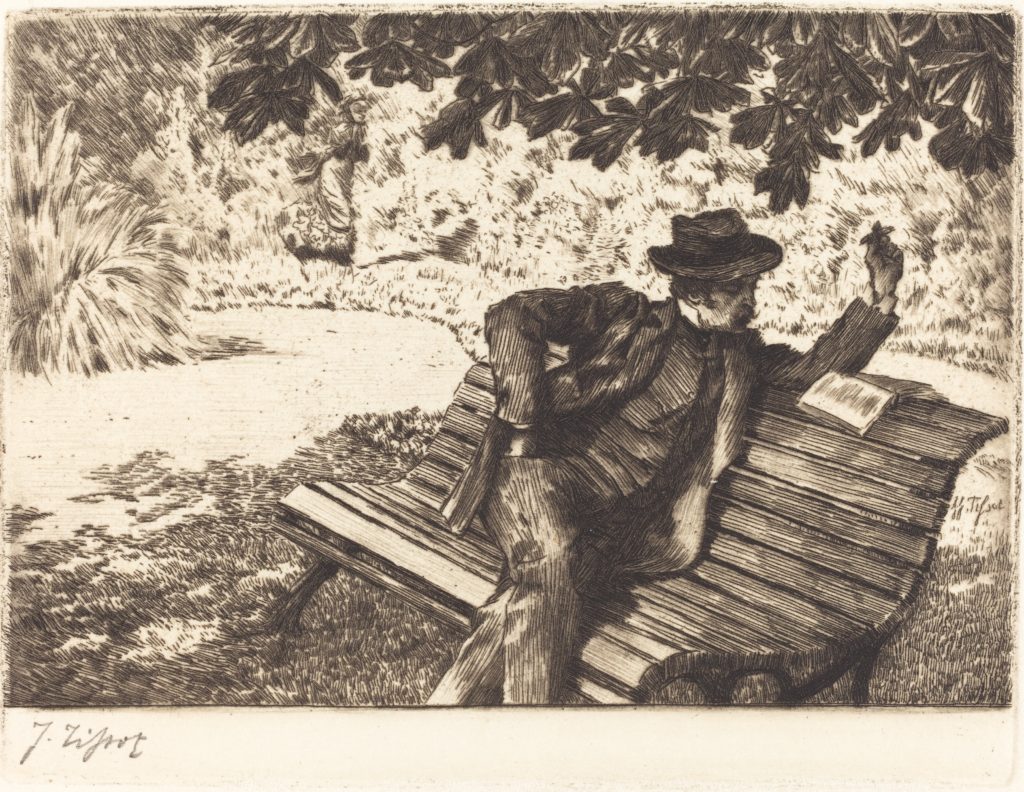Today, ResearchGate and Springer Nature are jointly announcing the findings of their syndication pilot. In this partnership, as we have previously analyzed, Springer Nature distributes the version of record of articles from several dozen journals to ResearchGate for access. Users with institutional entitlements can download the PDF, while other users are presented with a read-only version. Today’s white paper from the partners reports positive responses from authors and plan to transition this pilot into an ongoing service. From the publisher perspective, article usage is up and leakage is contained. And, ResearchGate, which added a partnership with Wiley during the Springer Nature pilot, emerges as a stronger identity and access platform and a potential counterweight to Elsevier.

Findings from the Pilot Syndication Partnership
Highlights from the findings reported by the syndication partners and their planned next steps include:
- Impact. Article accesses through this program added to those accesses through Springer Nature websites. The degree of added usage that could be documented varied tremendously by title. On the high end, there was an increase of more than 50% through ResearchGate vs. Springer Nature websites. The partners attribute this increased usage to a combination of improved discoverability within the researcher workflow as well as improved off-site access. They do not share how this usage might have compared with usage of similar articles through ResearchGate outside this pilot partnership.
- Entitlement. Institutional IP address recognition is the typical vehicle for determining on-campus access based on institutional license agreements, and it is unclear how ResearchGate sources this IP information since it does not have direct partnerships with institutions. As for off-campus authentication, ResearchGate does not use a SAML-based approach (as RA21 recommended) but instead utilizes ResearchGate profile information as the basis for user authorization. The partners believe they have verified the efficacy of this approach.
- Leakage. As the partnership develops, the partners anticipate being able to enclose the usage taking place through ResearchGate in usage reports shared by Springer Nature to libraries. This is expected to require additional steps by ResearchGate in order to be able to pass a COUNTER audit, whose usage can then presumably be incorporated through Distributed Usage Logging. The partners trumpet the value to libraries of showing entitled users that their library is responsible for their ability to download the PDF though the report acknowledges the need “to be more transparent about how data is exchanged between the two organisations.” This will be a key part of the value proposition enabling leakage to be successfully enclosed.
- Service Model. User behavior suggests a preference to access the version of record over an earlier version of the work (“author accepted manuscript”). Nevertheless, while the pilot partnership involved a read-only version of the full article for users without an institutional entitlement, the partners now plan to dial back the offering to include only an article preview.
- Authors. A survey of the authors of the articles in the pilot found a high degree of satisfaction with the partnership. Half of the authors already had a ResearchGate account — and these individuals were pleased to see two organizations connecting more seamlessly on a service level. Presumably there is an opportunity for ResearchGate here to add user accounts. In the survey, at least some respondents shared their hope that other publishers will develop a similar partnership with ResearchGate.
Potential Implications
The full range of impacts of content syndication will emerge over time but already in this project a number of implications are beginning to come into focus:
- Some have questioned how “sloppily” the partners have approached entitlements in contrast with the demands publishers place on libraries to regulate access entitlements. In this partnership, however, Springer Nature is working cooperatively to help to further develop ResearchGate’s identity platform as a counterweight to the identity platform that Elsevier has been building. While the report is silent on this, it is surely a possible outcome of this partnership — if not an outright objective.
- One of the most intriguing statements in the white paper notes that “ResearchGate and Springer Nature will explore bi-directional user journeys between their platforms, with a focus on improving the overall user experience.” Given that the current partnership envisions continued separate platforms and ecosystems, it is interesting to consider what might develop here. Could a user entitled on ResearchGate be considered entitled on the Springer Nature platforms without authentication through institutional systems (e.g., proxy servers or SAML services)?
- The decision to cease offering a read-only article to non-entitled users and substitute an article preview (i.e., metadata, abstract, figures, captions, and the full first page of the article) is notable. Put another way, ResearchGate is no longer going to provide access to the article for any reader without a subscription entitlement, bringing it closer to a typical subscription channel. How will this change the value proposition that ResearchGate offers its users? While we do not understand exactly what they learned that led them to this choice, we have to imagine that there may have been some indications from the study that suggested the potential substitutability of read-only access for paid subscriptions. If this were to be the case, it will be interesting to learn how — if at all — this finding will impact planning for GetFTR, a publisher initiative in which Springer Nature has played a leading role, which envisions providing a route for non-entitled users to reach the full text, at least on a metered basis.
- Finally, if leakage is key to libraries’ negotiating strategies, will librarians stand in support of this syndication initiative that has the stated purpose of plugging leakage by re-enclosing the associated usage and returning the value to the library subscription channel? And, will librarians raise questions of user privacy as they have done with RA21 and GetFTR?
Looking Ahead
The success of this pilot shows convincingly that we should anticipate future syndication partnerships — as the report itself states emphatically. We look forward to seeing which other publishers elect to syndicate their content to ResearchGate; we certainly expect to see Wiley do so before Elsevier! But equally, we await seeing whether publishers will begin to syndicate their content to any other scholarly collaboration networks, discovery services, courseware systems, research workflow tools, or other platforms. The details of such arrangements are likely to vary both across different types of publishers as well as different types of syndication platforms. Over time we expect to see a few predominant models and related standards and principles emerge.
Discussion
26 Thoughts on "Syndication Success: A Report from the Springer Nature and ResearchGate Pilot"
Thank you for this very interesting Summary. This will be a topic at the forthcoming APE 2021 Conference on 11.13 January 2021 in Berlin.
Arnoud de Kemp, Chairman of the Program Committee
I’m pleased to hear this. Publishers, librarians, researchers, etc. all need to explore the implications of syndication and understand how it will shape future possibilities.
This comes out the same week Springer Nature is said to be pursuing its IPO again. The failure of the last one seemed highly linked to their lack of a viable technology play and weakness in their subscriptions (recurring revenues).
What a coincidence.
That is an interesting coincidence. Why do you think they would bother though? In the past, you described the pilot announcement of this partnership as “snoozeville” — are you revising your thinking such that you feel announcing the results of the pilot can move markets? https://scholarlykitchen.sspnet.org/2019/03/01/springer-nature-syndicates-content-to-researchgate/#comment-81109
Very interesting piece—would love to see you team up more regularly. Still, I found the summary strangely uncritical, and—in its claims about Elsevier—arguably misleading. The idea of ResearchGate as an identity-platform counterweight is not (as the article’s lead suggests) in the white paper, but instead the authors’ speculation, as we only learn below.
More fundamentally, I’m surprised by the cheerleading for ResearchGate: How is a venture-backed, for-profit startup coming to own lots of crucial scholarly infrastructure anything but terrifying?
Your alternative is that Elsevier would be the only identity platform in town….
Much as I am loathe to offer support for the largest of commercial publishers, it is worth noting that Elsevier’s business model is largely based around selling goods and services to researchers, librarians, and institutions, while ResearchGate’s business is selling advertisements. Given the terrible things that algorithmically-driven outrage machines like Facebook have done to our society at large, I’m going to have to side with a future where researchers are the customers the platform is trying to please, rather than having researchers as the product being sold to advertisers.
I would only say that a competitive market is always better than a monopoly.
Absolutely, but as we’ve seen with seemingly every digital network, the market usually collapses down into one winner (one Facebook, one Google, one Amazon, etc.). If we shift over to the dominant model for social media, then I would expect to see a similar consolidation.
Thank you for the summary. How do you think a more open future plays into this effort? Springer offers the option to make an article open in 1900 journal titles (https://www.springer.com/gp/open-access/springer-open-choice). Could the looser authentication system be an acknowledgement that less of their revenue going forward will be from subscriptions and reading?
I don’t know that the authentication is an acknowledgement of that per se. But, regardless, Springer Nature is pretty forthright that they are pivoting to open publishing – see for example their extensive engagement with and shaping of Plan S (e.g.: https://scholarlykitchen.sspnet.org/2019/12/17/hybrid-journal-be-transformed-by-plan-s/ and https://www.nature.com/articles/d41586-020-01066-5).
Great summary by Lisa and Roger. But this discussion always reminds me , in terms of leakage , of the Dutch boy with his finger in the dyke . Springer Nature are insistent on their intentions to go fully OA , even as far as Nature is concerned. What relevance will leakage have then? Or truncated versions of articles?As for the IPO announcement, the business press are being encouraged to believe that it is the huge rise in submissions and in downloads in lockdown that makes this the right time to resurrect the idea. Will those levels persist when everyone is back in the lab?
Thanks David. Thought about in the long game, returning value to the library subscription channel props up that revenue stream to “buy time” while the OA pivot works its way through. What matters then in an OA world is that the content can start to migrate (the whole point of CC-BY) and in that world you want distributed usage logging so that you can show your now customers (those buying publishing rather than reading) the value of publishing with your portfolio. The truncated versions etc. also continues to shore up the value of backfiles, which are not automatically opened in an OA future though I imagine a time when the value will have been extracted from the closed universe and they will be re-monetized as open content with services.
Thanks very much for sharing this.
Just to note (and perhaps reassure) that there are other syndication platforms and access options available, and which are being supported by publishers large and small; at Researcher we have been providing remote access to versions of record via institutional libraries to our users for a couple of years now, with the support of publishers such as Taylor & Francis, Springer Nature, Wiley, Elsevier and the IOP, among many others. We are also part of the GetFTR beta programme.
Users of our mobile apps are routed through to their library’s individual access portals, with credentials saved for re-use at the library’s discretion. We aim for the system to provide the best experience for users while stemming leakage for publishers – and ultimately facilitating usage of libraries’ licenced collections “on their own ground”.
Olly Cooper, CEO, Researcher
Having now read the white paper, some thoughts:
Some journals saw as much as a 60% increase in readership, some saw as little as 3%. It would be interesting to see how this correlates with journal titles and other rankings (did lots of people read Nature for free or did lots of people discover previously obscure articles from unknown journals?).
The white paper talks about providing increased visibility for SN articles. It would be interesting to know if there were any tweaks to the RG algorithms to favor these articles over others on the platform or if they instead swam in the same pool as all other material posted on the site.
There are two proposed enormous pivots proposed for the future for RG:
1) Allowing a “bi-directional journey” off of the RG site to a different website. This is anathemic to RG’s advertising-based business model. In the past, their user terms forbid users from posting links to anything outside of RG. For a while, they went so far as to alter posted papers to change internal links to references to destinations within RG rather than the original versions linked in the paper. Most advertising-based sites do anything they can to prevent users from leaving. If they’re willing to give this up and forfeit traffic, this may shift a change in business model for RG.
2) Blocking access to posted papers for non-entitled users. I’m enormously surprised at RG’s willingness to install SN’s paywall within their site. This would seem to negate RG’s main selling point to users, free access to stuff to which you don’t subscribe. With this in place, RG becomes merely a mirror of SN’s own websites. I suspect that users will be much less satisfied with a “preview” version of articles that only contains the first page than with getting the whole thing without paying.
Thinking about the big questions here as well — what’s in it for SN and what’s in it for RG? SN gets further distribution of its papers, and with its paywall installed on RG, eliminates a source of leakage that will harm its subscription revenue going forward. RG gets some legitimacy and gets access to a ton of papers to drive traffic, albeit with a loss of functionality for many of its users. I’m still not sure what exactly RG’s business model is, perhaps other than being acquired by someone else (and maybe this gets them one step closer to that). Have there been any recent reports on revenue levels for RG that would make a revenue-sharing setup attractive for other publishers to sign on? Or is this really about enabling RG to drive traffic (and share those statistics with the publisher) in return for them stopping the display copyrighted material without permission?
I’m not a spokesperson for either organization, but I doubt RG will get into the business of “blocking access.” They simply won’t render the publisher provided full-text if they can’t make the entitlement match. The platform will default to how it works now. Springer-Nature, under the cooperation agreement signed in 2018, would still work with the RG provided APIs to monitor user uploaded content against their list of DOIs and make individual decisions about what to do with infringing content. So it’s not a big change in the RG user experience nor is it a major change in direction for RG.
Lisa, Roger I’m very interested in the phrase it is “unclear how Researchgate sources the IP information since it does not have direct partnerships with institutions.” Why would it be different from Google Scholar’s Subscriber Links program where the participating publishers share the holdings data directly with the discovery platform in order to streamline access at the point of discovery? I don’t love that idea – thus my involvement in GetFTR – but What am I missing here?
Hi Todd — from reading the white paper, the plan appears to be that Springer Nature will automatically upload “a daily feed of content” on behalf of authors, then, “entitled users will have access to subscription content, and non-entitled users will be able to view a preview version which includes metadata, the abstract, figures, captions, and the full first page of the article.” We may be arguing over semantics, but I would think that providing the full version of the article to some but only this “preview” version of the article to non-entitled (non-subscribing) users is indeed “blocking access.”
Authors can still upload earlier versions of articles like the preprint version and everyone can see those, but for what you’re describing, authors would have to upload a second copy of the version of record (with the same DOI). I’m not sure why they’d do that when Springer Nature is doing this for them already, and I’m not sure that RG would carry/be able to carry two identical versions of the same paper.
Even if an author was so moved to do so, then RG would presumably flag that copy as infringing and remove it (or perhaps … prompt the author to put it in their private “locker” for sharing upon request)?
As I recall, under the DMCA, when a paper gets flagged for takedown, the platform is supposed to be able to recognize it and immediately take it down again if it gets re-uploaded. So if that’s the case, then presumably there is recognition capability in place that could automatically do what you’re proposing here.
I am curious to know how papers in this program are treated as far as that private sharing upon request goes. If SN uploads the paper, can the author share it upon request with a non-subscriber?
I don’t think this relies on DMCA at all. It’s a different part of the SN/RG partnership but they are already working together on identifying content that authors can’t share – whether the titles are part of this partnership for full text loading or not (I wrote about this back in 2018 when the SNCUPT/RG agreements were revealed – https://scholarlykitchen.sspnet.org/2018/05/02/if-researchgate-is-where-authors-connect-and-collaborate/).
As to sharing privately – I don’t see why not. But, you can test it out (I can’t because RG recognizes me at UIUC-entitled). Go here – for me this shows at UIUC-entitled – and see if you can message to ask for it? — https://www.researchgate.net/publication/327404073_Individual-_and_population-level_drivers_of_consistent_foraging_success_across_environments and see if you can make a request.
To clarify, it’s not an aspect of the DMCA here, but because of the DMCA, platforms need a way of fingerprinting a piece of content to ensure that when they take it down, it stays down. My suggestion was that this could be repurposed for use in the manner you suggested, allowing for automation if the process.
Many thanks for highlighting and summarizing the outcomes from this pilot. I’m excited as the decisions resulting from this follow so neatly in the footsteps of the work we did at Kudos to offer “shareable PDFs” – plain language / illustrated summaries of articles, with trackable links to the full text on the publisher site, for posting in platforms such as ResearchGate – enabling researchers to leverage these platforms as discovery channels while consolidating their usage in one place. We launched these 3 years ago (here’s an example of one that I shared in ResearchGate: https://www.researchgate.net/publication/324069572_Understanding_and_supporting_researchers'_choices_in_sharing_their_publications_the_launch_of_the_FairShare_Network_and_Shareable_PDF)
Note, however, that while *usage* is certainly increased by Shareable PDFs and their ilk, this should not be confused with “impact” as in your first bullet above. I get that you’re using “impact” in the sense of “impact of this pilot”, but I’m just being pedantic for the record and emphasising that this does not equate to “impact” either in academic or real-world terms 🙂
I really appreciate your being “pedantic for the record”! 🙂 It’s good to be reminded that the Kudos plain language summaries can be shared into ResearchGate, since the study described yesterday presumably did not try to disentangle all these variables. As a huge fan of scholars increasing the public impact of their work through translational efforts, I certainly hope that we’ll see more programmatic efforts to make scholarship accessible to the layperson.



